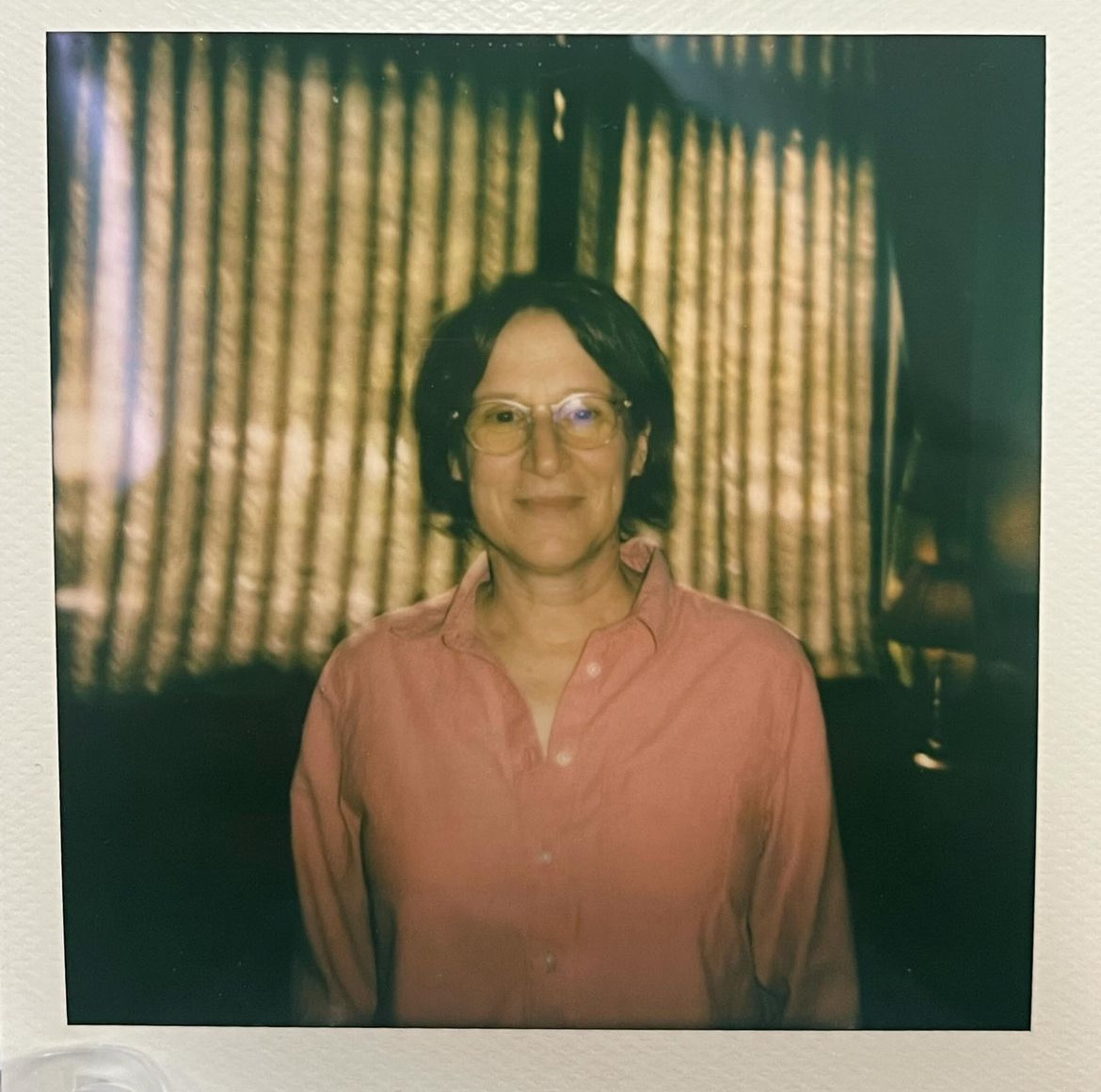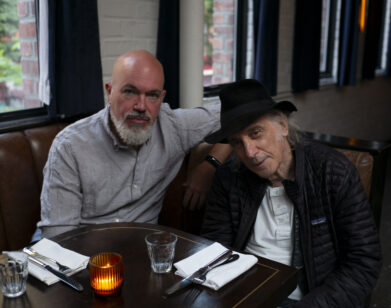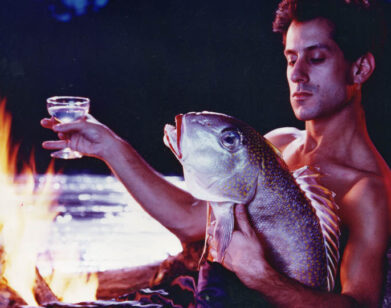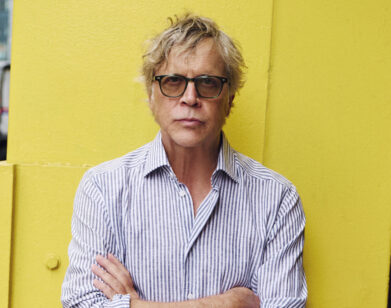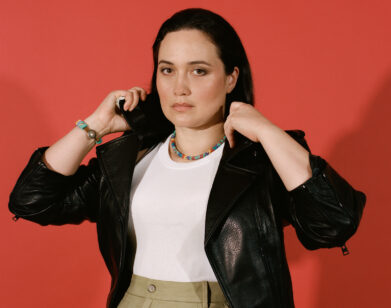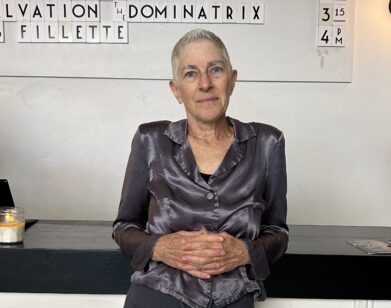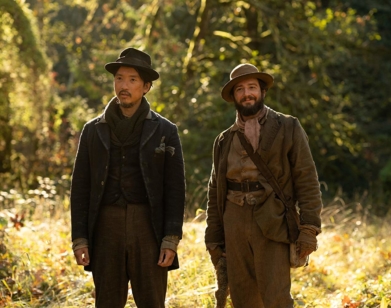DIRECTOR
“An In-Between Kind of Love”: 30 Minutes With Filmmaker Kelly Reichardt
Kelly Reichardt is a filmmaker who has always worked in opposition to industry norms. Since 1994, she has made films that visualize America from the perspective of those “on the perimeter of society,” as she put it to me last month. Through her body of work, she has developed an image of our country, usually the Pacific Northwest, as a stunning, stark environment in which it can be hard to survive. Her characters—be they a homeless woman in search of a lost dog, early settlers in search of economic opportunities, or a working artist in search of five minutes of peace—are often lacking what they need, and while Reichardt’s films may not provide answers to their plights, they do offer an empathetic eye rarely found in contemporary cinema. Reichardt’s body of work is remarkable for its consistency in quality and creative vision; she simply hasn’t made a film that wasn’t great, from her modest early masterpieces like Wendy and Lucy (2008) to the more meticulously designed later works like First Cow (2019). Alongside her frequent collaborators, the writer Jon Raymond and the actors Michelle Williams and Lily Gladstone, she has managed to keep the spark of independent cinema alive.
Reichardt teaches film at Bard College, where I began studies the year after her film Night Moves came out. I didn’t end up taking any of her classes, but she shares an office with my mentor, the critic Ed Halter, and we would spend idle time thumbing through her collection of Film Comment issues and tapes of The Kinks. I remember her once imitating Peter Hutton, the master experimental filmmaker and Reichardt’s late colleague, who found her film Night Moves to be “too much like a movie.”
The 60-year-old director’s most recent film, Showing Up, finds Reichardt collaborating once again with Michelle Williams in what marks a somewhat lighter tonal shift compared to Reichardt’s other stories. If her previous characters wrestled through poverty or unknown frontiers, Williams’s character Lizzy is simply trying to survive in the art world. On the eve of a retrospective of her eight feature films at Metrograph, entitled American Landscapes: The Cinema of Kelly Reichardt, I sat down with the filmmaker at the Chelsea Hotel to reflect on what she’s learned over the years from her very first film jobs, her long-lasting collaborative friendships, and introducing her Bard students to her version of the canon.
———
CONOR WILLIAMS: I read that in the late 80s, you started out in the art department on some Hal Hartley films?
KELLY REICHARDT: I worked on a Hal Hartley film. I think I was a PA for costumes. And then I was in the art department for [Todd Haynes’s film] Poison. I think the first film I worked on was [Norman René’s film] Longtime Companion, in the art department, and then we did Poison. I forget where Hal’s film fell in that. Those were some of the first things I did when I got to New York.
WILLIAMS: What did you learn from working on those sets?
REICHARDT: Well, Ted Hope told me when I was a PA–I remember I was once reading a book on set because there was so much down time, and I got in trouble for that–and he told me I just needed to look alert even if there was nothing to do. You know, on the other side of that now, when I see someone reading a book on my set I have to throw it off. [Laughs] So yeah, what did I learn? I started a lifelong friendship with Todd Haynes, and first I was really friends with his partner, Jim Lyons, who starred in Poison, who was also the editor. That was the first film I worked on that I was so invested completely in what we were making, and Todd was our sort of leader and spiritual guide. All the different departments on that film really connected with each other, where previously, everything felt very separate.
WILLIAMS: I read an interview that Todd did with you right after River of Grass, and you said to him that you were thinking about working on another sort of crime drama at the time, and I’m wondering what—
REICHARDT: Became of that?
WILLIAMS: Yeah, what became of that and what led you towards the films you ended up making instead?
REICHARDT: That film never got made. My dad’s a crime scene detective, so it was based on some stories I really heard from the times—this was before true crime was like, the big thing. And it wasn’t true crime really, it was my take on a bunch of stuff. Anyway, I could never get money for a second feature after River of Grass. What ended up happening was I ended up spending time in Portland with Todd, because Todd moved out there and I had been making Super 8 films at this time, when I couldn’t really get a feature made. And I had met Jonathan Raymond through Todd and I read his first novel, The Half Life, which decades later became First Cow, in part. But I drove out to L.A. and I worked on a reality TV show to save money and then, with that money, I was going to make another short film, like 16mm, which became Old Joy.
I had asked Jon if he had any short stories that were all exteriors. I didn’t think it would be a feature, I just thought it would be a short. I didn’t know how long it would be—it was just an art project. Then one thing rolled into another and working with Jon as a writing partner started to dictate a lot of the things we were interested in. That friendship and his stories sort of took me in a different direction instead of going back to Florida, where I was from. That was such a relief.
WILLIAMS: What does that collaboration look like between you and Jon? What does his input look like? What are you taking from the story? What stays in?
REICHARDT: It’s been different every time and it’s developed over the years, because originally he sent me the story for Old Joy. And you know, I turned it into a script and then sort of stuck pretty close…well, the things that were really different about it, I guess, were the two characters in his story were more similar, as far as where their lives were. And I married one of the characters, gave one of the characters a wife and made their places in the world further apart. And then the ending, the story of the hot springs was a different story, but otherwise the vibe and the undercurrents and the dialogue, most of the dialogue, was from Jon’s story. Then I set it, for better or worse, in a more political moment. The next one was a concept we came up with together. And then Jon wrote it as a short story called Train Choir, and then I turned it into a script again. Over the years it’s just been different all the time because we’re in each other’s lives a lot, so we’re in a constant conversation. But he’s the writer, and to me, taking ideas and concepts and putting them in a script is a different set of skills than the conceptual thing of coming up with a story and characters. And then I worked with Maile Meloy for Certain Women. Even now, I’m writing something on my own, but I still really rely on Jon’s innovative voice. And with Todd too, we’re all sharing our little inputs. It’s nice because we’ve known each other for decades now.
WILLIAMS: I think that’s great to have that kind of collaborative atmosphere. I was watching Wendy and Lucy recently and to me, it felt very visually and thematically similar to Vagabond, the Agnès Varda film. Was that a conscious decision?
REICHARDT: You know, it was such a long time ago, but I am sure I had seen that—I don’t remember if it was really foremost in my mind at that point, because I remember years later, the Vagabond restoration came out. And I think I hadn’t really seen it since. [Barbara Loden’s film] Wanda, for example, I didn’t see until I was editing Wendy and Lucy. And Vagabond I’m sure I had seen before, but I don’t think it was as forward in my mind. I love Vagabond and I really appreciated the shape of it more when I got older than I did when I saw it when I was young. It is really special, but I probably might not have recognized that at that time.
WILLIAMS: Regarding your years-long collaborative relationship with Michelle Williams, what would you say are the qualities you look to draw out from her in a performance?
REICHARDT: I don’t know how to talk about acting. What actors do still remains very mysterious to me. I try to stay out of Michelle’s way. We’re together in search of the character. Even as we’re shooting, we’re asking ourselves what “she” the character would do. The main thing I’d say about our working relationship is that there is a mutual trust, and it’s fun as the years go on because we both trust ourselves more.
WILLIAMS: You dedicated First Cow to Peter Hutton, who died in 2016. His films made an important impression on me. I’m curious what Peter taught you.
REICHARDT: It’s hard to sum up anything with Peter and I don’t want to sum him up because he just had a great presence. I always arrived first on my teaching days [at Bard College] and I’d leave my office door open in hopes of Peter stopping in, which he usually did. He was just a curious person, which is part of what made him such a good teacher. He had a very laid back, man-at-sea vibe, where most filmmakers are usually wound pretty tight. When I think of Peter, I think of him rolling a cigarette. Everything with students came down to “what did you shoot today?” If I did anything too by-the-numbers in one of my films, he would really want to talk me out of it. He really didn’t like the ending of Night Moves. Peter is always in my head–what would Peter think about this? He was very much about having a daily practice, life and artmaking running hand in hand.
WILLIAMS: There was a line that stuck out to me in Night Moves, your film about a group of activists who blow up a dam. Someone said, “You need to take down 12 dams to make a difference.” What are the dams in your work that you find you still face?
REICHARDT: I mean, I’m a political person and I live in the world and I teach film. I have all these other things running through my head. But when I make a film I kind of just want to dive into what I’m doing and not have all those other things… But what’s in my way as a filmmaker? I guess I’d like to be looser, in a way. Like, still deal with formalism. There’s some people who have really formal structures, but there is also a looseness that I don’t always know that I’ve achieved in the way I would want to.
WILLIAMS: Something that strikes me about your films is that as far as any kind of romance goes, there’s usually this kind of unspoken queer intimacy, like in Old Joy, or Kristen and Lily’s segment of Certain Women, or in First Cow. What can you tell me about that?
REICHARDT: That’s interesting. Well, the kids have taught us certainly how fluid everything is, right? [I focus on] people who, for whatever reason, class, sexuality,puts them on the perimeters of society, which is where our interest lies. I think of different kinds of love that are involved with friendship. None of those relationships are… they skirt around sexuality, and it’s maybe an in-between kind of love. I don’t know, I hate to talk about it because I hate to define those things, which, you know, when you make your film you’re trying not to say what it is and let the viewer have some space to find what they want in it.
WILLIAMS: How did it feel to see Lily Gladstone’s rise to the spotlight with Scorsese’s Killers of the Flower Moon? Did you see the film? What did you think of her performance?
REICHARDT: It was a pure delight seeing her up there on the screen! She seemed right at home in that mix of actors. It was more surreal going past Casa Magazines and seeing her staring out of the glass on the cover of Vogue and Elle and Variety. But then again, she looked at home there as well.
WILLIAMS: Your most recent film, Showing Up, was your first outright comedy, and your first film in some time to be set in the present. Was that a conscious decision?
REICHARDT: Well, River of Grass is sort of—I wouldn’t call any of them comedies, because it’s nice if laughter takes you by surprise. But the times were so dark when we were conceiving of Showing Up. We were, even for ourselves, looking for a little relief. We wanted to embrace artmaking and laugh at it all at the same time. How some small decisions will torture you for days, keep you awake, consume you and you know in the end that it’s likely no one else is ever going to notice. I spent a good three months obsessing over the cricket sounds in First Cow, totally fearful that their chirping rhythm was going to drive the audience insane, so I went back into the sound mix and carefully placed each chirp. Now that I’m not under the spell of that film, I find it hard to believe anyone is following the crickets. But you know, it’s real at the time you’re in it. And that’s like the burnt piece for Lizzy [in Showing Up.] In fact, when we were shooting that scene, we had to wait until the next day to shoot because when we were first doing the scene I could not decide if the piece was burnt the correct amount. “Did it read enough that it would be a problem or was it too obvious?” I went down a real rabbit hole just as Lizzy does in the film. It happens to everyone who makes things, you can get sucked too far into it.
WILLIAMS: You teach at Bard. I went there, but I didn’t take any classes with you, so I’m wondering, what do you see from your film students that excites you? What do they make that feels different from what you’ve seen before?
REICHARDT: I largely have them walking in the footsteps of bastards, i.e. white men. [Laughs] Because it’s easier to teach with cleaner lines: Renoir, Sirk. This semester, we’re looking at David Lean a lot. I’m giving them scenes that they’re re-doing without the tools to be able to make them look like the movies they come from. In a way, I like to think about how Fassbinder was so obsessed with Sirk and then like, made those melodramas on much smaller budgets and made them different. So, in my class, it’s not like they’re working on their own ideas so much, you know? Though they bring ideas to what I’m giving them, but I’m trying to sort of–
WILLIAMS: Introduce them to a canon?
REICHARDT: Yeah. And to a sort of formalism that isn’t just letting the camera follow the dialogue around. Something to pull against the amount of images on YouTube and wherever they’re looking now, just to introduce the idea of the language of cinema. In one of my classes, they all do ten minutes of a feature film and they cast it and film it however they want, and then it gets stitched together for the semester. And one thing they’d used to do is like, they would swap the gender of people, and that would kind of make some sort of statement in the film. And now gender is so fluid to them that those aren’t even statements to them anymore.
WILLIAMS: Yeah, it’s not even necessarily conscious.
REICHARDT: That is really interesting to me to see how that has developed over time. When you take specific gender roles out of these classic Hollywood films, they morph into something else. They’re really generous with each other, it’s a natural flow that they help each other out and work with each other. Maybe because so many people make films now, the competitive thing between you and I has gone away because everyone in the world has a camera. So something quite nice arrives from that I find really pleasing to witness. When I started teaching originally, I was teaching at NYU, which was not a good fit at all. It was one girl for every sixteen boys. Now, my classes are much more female. And they’re much more able to keep up with technology. I stand in the front of the class for ten minutes with my remote control trying to make something work, while they all yell instructions. I just wouldn’t really be connected with that generation if I didn’t teach. And I like being around young people and being in the flow of that conversation.

